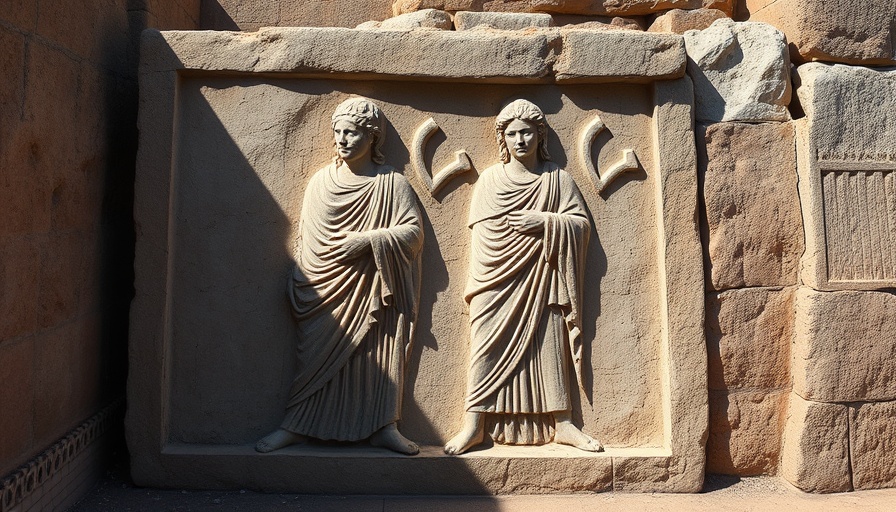
Unveiling a Remarkable Find in Pompeii's Necropolis
This April, the Archaeological Museum of Pompeii is set to unveil a remarkable discovery that shines a light on the roles of women in ancient Rome. A stunning priestess statue, discovered mounted against a wall in a necropolis near Porta Sarno, will play a prominent role in the exhibit titled “Being a Woman in Ancient Pompeii.” This discovery not only captures artifacts of aesthetic beauty but also delves into the spiritual significance of women in a society governed by patriarchal norms.
Significance of the Priestess Statue
Found in pristine condition, the statue of the priestess stands alongside a male figure clad in a toga. Distinctly different in design, the priestess wears rich accessories that speak volumes about her status and role. The intricacies of her adornments, including amphorae-shaped earrings and a distinctive crescent-shaped amulet known as a lunula, illuminate the cultural rituals surrounding women in ancient Rome.
Cultural Context: The Role of Women in Ancient Rome
Understanding the societal framework of ancient Rome reveals intriguing insights into women’s lives. Despite the predominantly male-dominated society, women often held significant spiritual and societal responsibilities. The priestess depicted in the statue, possibly dedicated to the goddess Ceres, signifies an intersection of femininity and authority. The lunula worn by the statue represents a period of maidenhood, whereas the wedding band indicates a transition to motherhood—reflecting the pivotal phases of a woman's life filled with reverence and respect.
Connecting the Dots: Priestesses and Their Influence
Priestesses played a crucial role in spiritual rituals and were often leaders in religious ceremonies. Ceres, the goddess of agriculture, symbolizes growth and nurturing, qualities firmly tied to the reproductive aspects of femininity. The discovery of this statue reaffirms the hidden narratives of women who, though often overlooked, contributed significantly to the spiritual and cultural landscape of Rome.
A Broader Archaeological Narrative
Pompeii is a treasure trove of discoveries that tells the story of daily life through a lens often clouded by time. The unveiling of the priestess statue coincides with other astonishing finds, such as large private spas and ornate frescoes depicting mythical scenes. Each artifact adds layers to our understanding of the city and its people prior to the catastrophic event that sealed them in ash.
The Future of Women in Archaeology
This exhibit not only highlights the significance of women's roles in ancient Rome but also serves as a platform for discussing contemporary issues surrounding gender representation in archeology. As archaeological narratives continue to evolve, it is essential to spotlight the contributions of women both in ancient societies and in modern-day excavations. The inclusion of women’s experiences in historical narratives offers a more comprehensive understanding of humanity's past.
Final Thoughts: The Legacy of the Priestess
As we approach the opening of the exhibit, the anticipation builds around how this powerful statue will help audiences engage with and understand the history of women in Pompeii. Not only does it stand as a representation of ancient artistry, but it also acts as a vessel preserving the voices and experiences of women from a time long gone.
 Add Row
Add Row  Add
Add 




Write A Comment